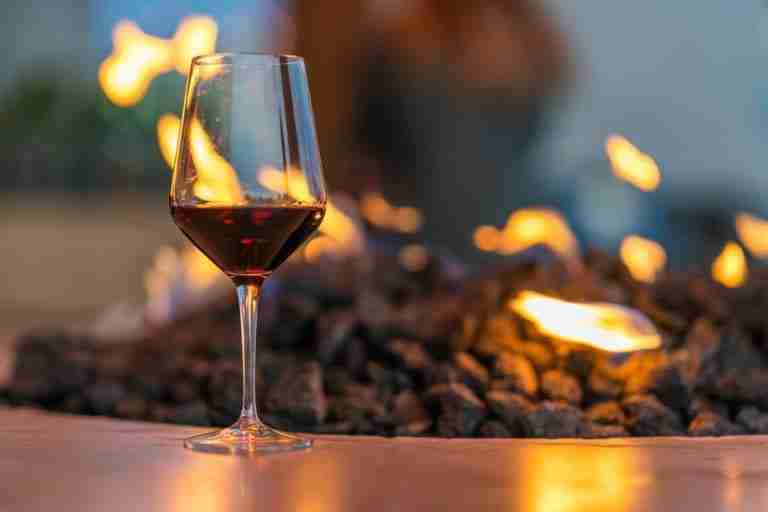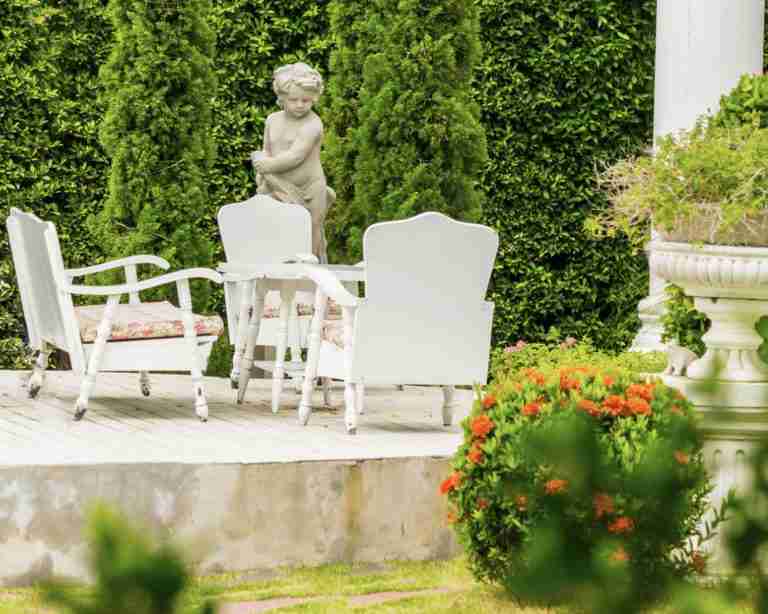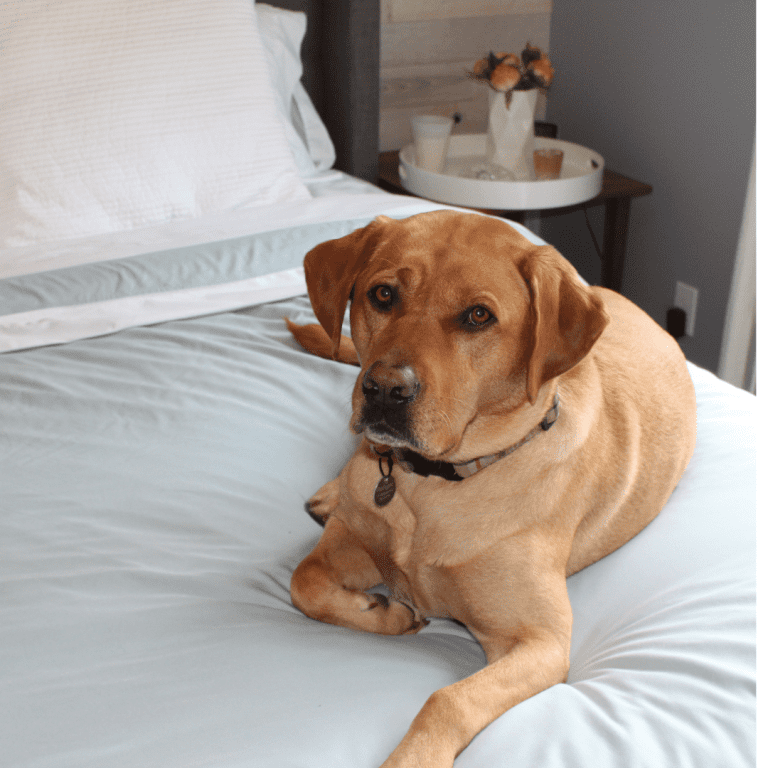‘teddy bear’ Rhododendrons- the ideal compact evergreen border shrub
First impressions are everything, so curb appeal is important right? How you landscape the entrance to your home makes a difference. Landscape design around your driveway is an easy way to make your home more inviting.
Interesting evergreen shrubs and trees are ideal for a consistent esthetic driveway border. They also work well as a pathway border.
So when it’s cold and wet in the winter, you still have beautiful shrubs to admire. Different sizes and blooming seasons keep it interesting. I am sharing my new favorite shrub named after a teddy bear. Who doesn’t like teddy bears anyway?
Consistent Landscaping Vibe
The general vibe of the overall landscaping design is important to consider when planning any landscaping around your home.
Our remodeled home has an East Coast Hampton vibe. With that in mind, I wanted to our entire landscape to reflect the traditional refined feel of a traditional coastal home. We used crushed oyster shell for a path that winds around our home. It has a lovely coastal feel that blends well with the design and theme of our home.
The original landscape plan included lots of grass and ground cover. I didn’t love it. It wasn’t me and it didn’t match the look and feel of my home, so I pulled everything out and started from scratch. It’s been an ongoing process to transform the curved formal driveway. I am layering my plants from low to high.
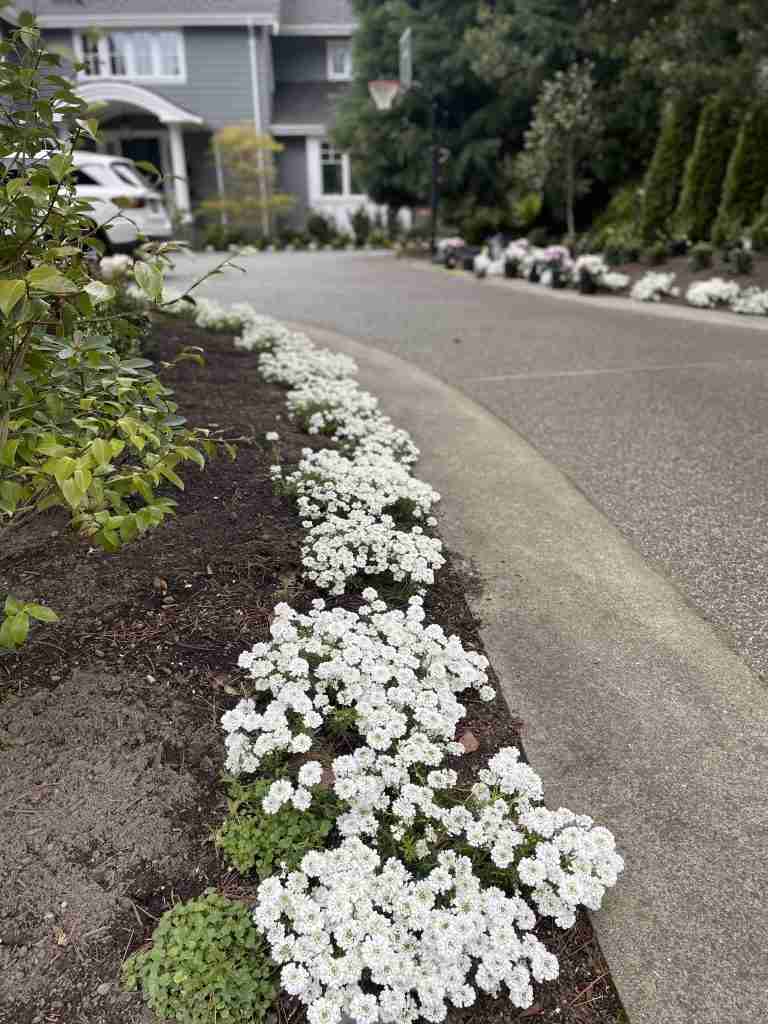
My Driveway Landscape Design Goal
A magnificent driveway design can set the tone for the rest of the home and property, making a wonderful first impression. Our driveway has a soft curve so I wanted to enhance the curve by planting matching driveway border shrubs on both sides.
My objective is to plant evergreen shrubs and perennials that bloom at different times, so the landscaping looks great all year.
What To Consider When Planning A Driveway Landscape Border
Several things to consider when landscaping the driveway area are: maintenance, visibility (of both the driveway and the landscaping around it) and the general feel of your yard in relation to the driveway landscaping.
Safety can also be a concern, as it pertains to both visitors entering and exiting vehicles, as well as the ability to see clearly as one is entering or exiting the driveway.
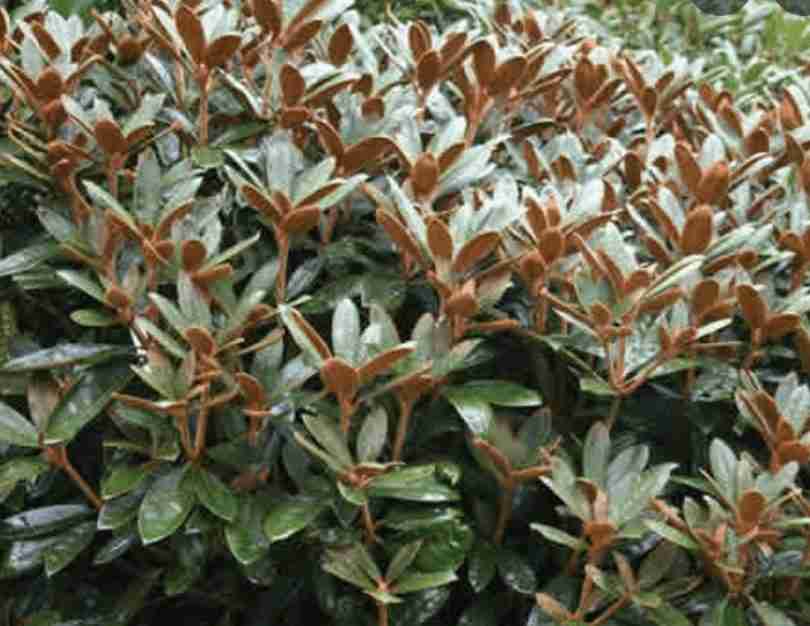
Teddy Bear Rhododendron- Ideal Compact Evergreen Shrub
I always like to share my favorite plants. This shrub as as cute as the name!
In this article, I am focusing on the Teddy Bear Rhodie (it has a cute name) and is a sweet evergreen shrub. Official name is: RHODODENDRON WILDARTEN UND ZWERGFORMEN
I was on the hunt for the best compact evergreen shrub that had dark green leaves and would grow well in partial sunshine. Ideally, I wanted a plant that had beautiful foliage so it looked appealing all year. After visiting over six nurseries with my good friend Lenae, I landed on the teddy bear rhododendron. I bought twenty two of them!
Since rhododendrons are native to the Pacific Northwest, I never fully appreciated how many unique varieties of rhodies there are. I mean you see them everywhere.
There are more than 1200 different natural species in the Genus (group) Rhododendron. These wild types, called species (as differentiated from hybrids), are native to the temperate regions of Asia, North America, and Europe, as well as to the tropical regions of southeast Asia and northern Australia.
The Teddy Bear rhododendron is different than the average native plant.
Here is what I love about the compact evergreen shrub:
- It’s Evergreen– Looks great all year around. The shrub is compact and always looks tidy. It only grows to be 3 ft tall and it’s new growth is pretty. You can buy these beauties in various container sizes but most often sold in two gallon containers.
- Prized attractive foliage– This rhododendron, species, are prized for its foliage (so pretty even with no flowers) more so than the soft pink flowers that appear for a brief period in spring, forms a compact rounded evergreen shrub. The light brown fuzzy underside on the leaves, called n mild climates rhododendrons and azaleas can be planted almost any time of the year with reasonable success. In colder areas, early spring planting is recommended, with early fall planting a second choice. In hot areas, fall planting is recommended, as this allows the plant’s root system to get well established during the colder fall and winter months. it seems to be a deterrent to the rhododendron lace bug which is plaguing azaleas and rhodies in Pacific Northwest gardens.
- Blooms- The buds are large and bloom from pink to white- keeps it interesting.
- Low maintenance– Like most rhododendrons, they are low maintenance compared to other flowering shrubs.
The dark glossy leaves pairs well with so many manys of plants such as hydrangea, candytuft, boxwoods and any other lime green foliage that contrasts well with the textured foliage.

How to grow Rhododendron:
Grows in moist but well-drained, leafy, humus-rich acid soil in part shade with shelter; see rhododendron cultivation
Keep in mind that all rhododendrons require acidic well drained soil. These plants have fine fibrous root system and part-shade, morning-sun exposure are best for most rhododendron varieties. Propagate by semi-ripe cuttings in late summer, layering in autumn or grafting in late summer or late winter
Suggested planting locations and garden types:
- City and courtyard gardens
- Pathway borders
- Driveway borders
- Cottage and informal garden
- Patio and container plants
- Low Maintenance gardens
- Flower borders and beds
- Pairs well with hydrangea shrubs like the vanilla strawberry shrub.
- Plant in front of boxwoods

Direct Light For Rhododendrons
Rhododendrons and azaleas do well with direct light for at least part of the day. Excessive shade normally results in very limited flowering. In hot areas, northern exposures are preferable to southern exposures.
Exposure to constant wind is not desirable, especially the salty winds of marine environs. Generally large-leaf rhododendrons are less tolerant of sun and wind than small-leaf rhododendrons or evergreen and deciduous azaleas.
Proper Soil Conditions
Proper soil conditions is key. (See Soil Conditions for more information.) Rhododendrons are acid loving plants. As such they perform best when the soil is acidic (with a pH between 4.5 and 6.0). They need well-draining soil with an abundance of organic matter.
Rhododendron and azalea roots also need oxygen for healthy growth. Many materials can be used to amend the soil. Compost is very effective.
You can use crushed oyster shell to prevent slugs and other pests. Heavy clay soils collect and retain water so it is recommended to plant rhododendrons and azaleas above the base clay soil in a mound of desirable soil. (See Figure below.)
If you dig a hole in heavy soil and fill it back with a light soil mixture, you may be creating a bucket which will hold significant water.indumentum, is an attractive feature with an added benefit.
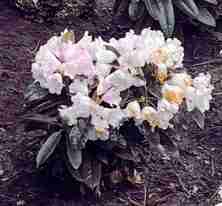
When to plant:
In mild climates rhododendrons and azaleas can be planted almost any time of the year with reasonable success. In colder areas, early spring planting is recommended in early fall planting being a second choice. In hot areas, fall planting is recommended, as this allows the plant’s root system to get well established during the colder fall and winter months.
Rhododendrons grow well with direct light for at least part of the day. Excessive shade normally results in very limited flowering.
So what’s so special about azaleas and rhododendrons? The answer is simple. They are the epitome of spring. A specimen in full bloom has no equal in the spring landscape.
When viewed in the garden, they are drop-dead gorgeous in all their various forms and colors. A single specimen is enchanting when viewed close up. A grouping of them viewed at a distance or encountered in a woodland setting is nothing short of glorious. Their form, habit, and amazing colors dominate the spring landscape.

Differences Between Azaleas And Rhododendrons
Botanically speaking, azaleas and rhododendrons belong to the Rhododendron family, with azaleas identified as a subspecies of the rhododendron family. According to botanists, there are not enough botanical differences between the two to classify them as two separate species. The American Rhododendron Society describes the plants this way: “All azaleas are rhododendrons but not all rhododendrons are azaleas.”
Azaleas and rhododendrons are native to Asia, Europe and North America and may be either deciduous or evergreen. All evergreen species originally came from Asia and generally tend to be hardy only to Zone 6.
The deciduous species are native to this country and tend to be hardy to Zone 4. Of 17 native species, all but two are native to the southeastern part of the United States. They have been extensively hybridized for the past couple of hundred years, resulting in thousands of hybrids, both named and unnamed, with characteristics that don’t always clearly identify them as either azalea or rhododendron.
Azaleas and rhododendrons add texture and color to your landscape no matter what your exterior design and color of your home is.



